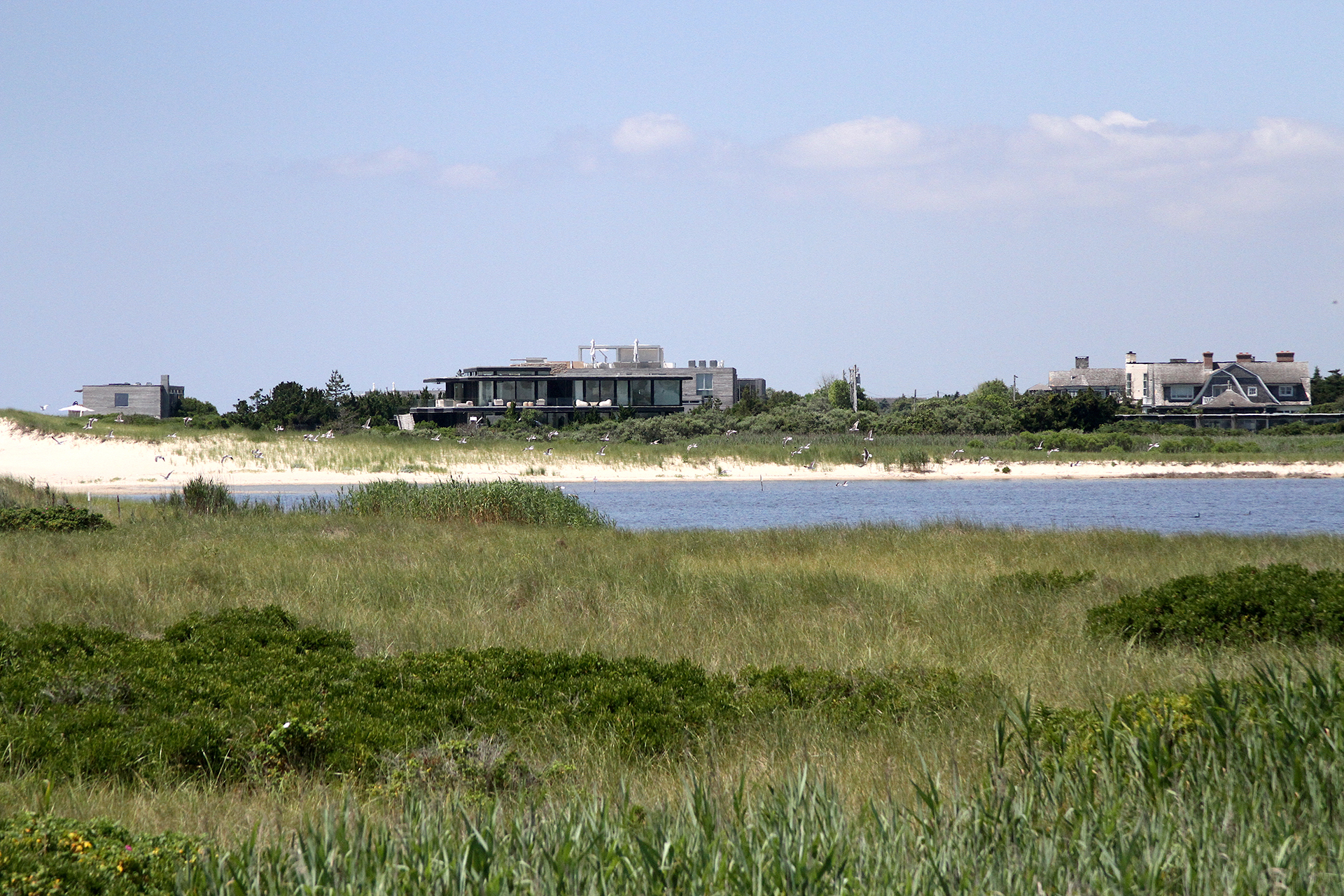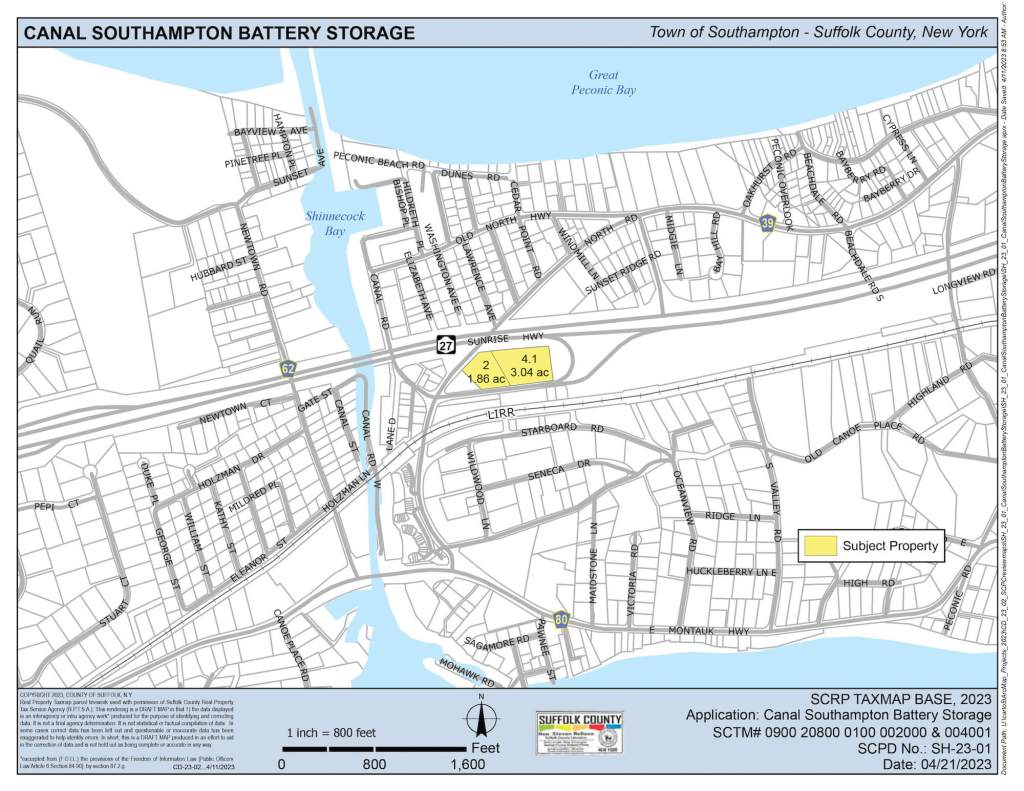Restoring The Health Of Sagg Pond


Harmful algal blooms will be attacked in Sagaponack Pond with the help of Dr. Christopher Gobler and an aquatic management plan.
Gobler, a professor at the Stony Brook University School of Marine and Atmospheric Sciences who is also the director of its Center for Clean Water Technology and runs his own laboratory across from the school’s Marine Sciences Center, will be receiving Southampton Town water quality improvement project funds for the cleanup efforts. The town awarded him $56,000 a year for two years to plan, maintain, monitor, and rejuvenate Sagg Pond. The aquatic restoration component includes the installation of monitoring sensors and removal of sand for inlet openings.
Gobler will be monitoring water quality — temperature, salinity, pH, phytoplankton, blue-green algae levels — determining factors promoting the growth of toxic blue-green algae, evaluating nutrient sources into Sagg Pond, tracking both fecal bacteria and food-borne pathogen contamination, and assessing suitability for feeding animals that can clean the water by eliminating these particles.
“We can rapidly assess what’s going on in this pond in real time with this project,” said Ryan Wallace, a Stony Brook Ph.D. candidate who works at the Gobler Laboratory. “We know that there’s probably bacteria within this pond, and a significant amount, but we don’t have any data to back that up. Surveys can look at bacterial concentrations and detect the source.”
Determining the different sources of nitrogen and phosphorous and how they’re entering the pond will be important for remediation purposes and distinguishing whether the contamination is a result of humans or animals. From there, a plan of action can be put into place to correct the issues. What compounds the problem though, is when the pond is opened to the Atlantic Ocean, and the saltwater mixed with that of the freshwater pond.
Sagg Pond had been on New York State Department of Environmental Conservation harmful algal blooms notification list from July 20 to October 18, 2018, the last time sampling was done.
“Mecox does not even have that intensity of harmful algal blooms,” said Trustee Ann Welker, whose board worked with Gobler to present the application for money from the Community Preservation Fund for the project. “Although a significant study is being done on Mecox, each water body is single and separate and should be treated as such. Mecox is considerably larger and considerably deeper than Sagg Pond.”
Supervisor Jay Schneiderman said he’s hoping the Mecox management plan in the works can create a template for Sagg Pond.
“I hope there’s more similarities than there are differences,” he said.
Councilman John Bouvier said it’s the informational qualities of the proposal that are invaluable.
Toxins, specifically liver toxins, have been picked up in the pond in recent years, according to Wallace, who said because there is very little data, not much is known about the pond. The money will help fund a telemetry buoy, which will measure toxin concentrations every 10 minutes and stream the recordings back to the lab’s website.
The Center for Clean Water Technology, which at a June 6 work session unveiled the first phase of a nitrogen-removing biofilter, was awarded $195,000 to conduct a site characterization assessment to tie a filter in with the existing sanitary systems at the Westhampton Beach high and middle schools for increased nitrogen removal. The waste would be reduced to less than 5 mg/L, and from 1800 pounds to 90 per year.
The Bridgehampton Beach Club’s request for funding was partially met. It will receive half what it asked for, or $43,465, for the design costs and installation of a new alternative sanitary system to replace a single existing cesspool installed in the early 1900s.
The seasonal club, off Ocean Road, is used three months out of the year and is upgrading its pavilion.
“We believe this is a good thing — that we engage with people who want to upgrade their systems, and we have the funds to do so,” said town Assistant Planning Director Janice Scherer. “It’s in a high-priority area.”
Architect Peter Cook said the pavilion is being upgraded to address membership needs. He said while there’s no outside events like weddings planned for this year, there currently is no kitchen inside the not-for-profit facility, which is one of the additions that would go along with the sanitary system. The club will be breaking ground after Labor Day.
desiree@indyeastend.com



